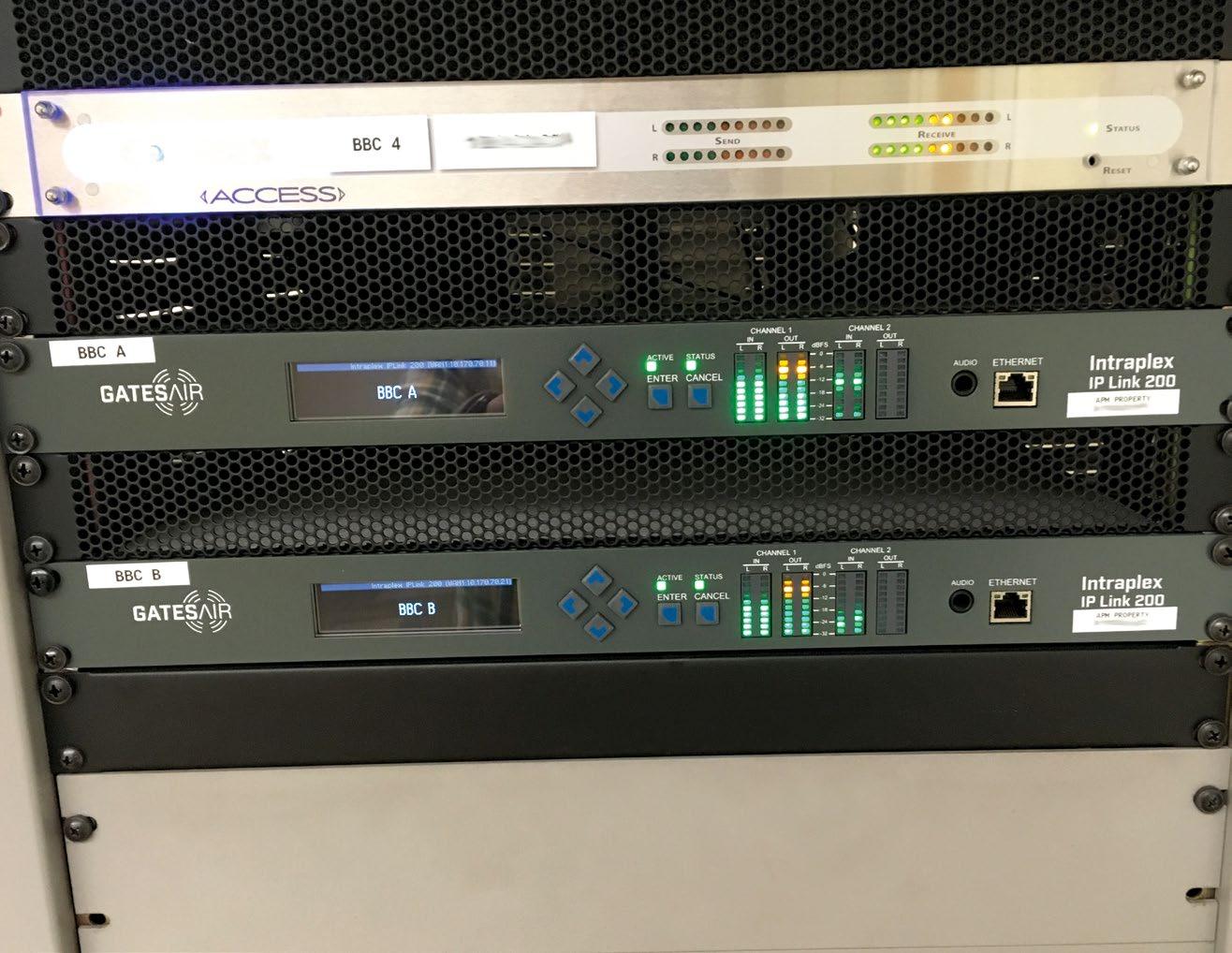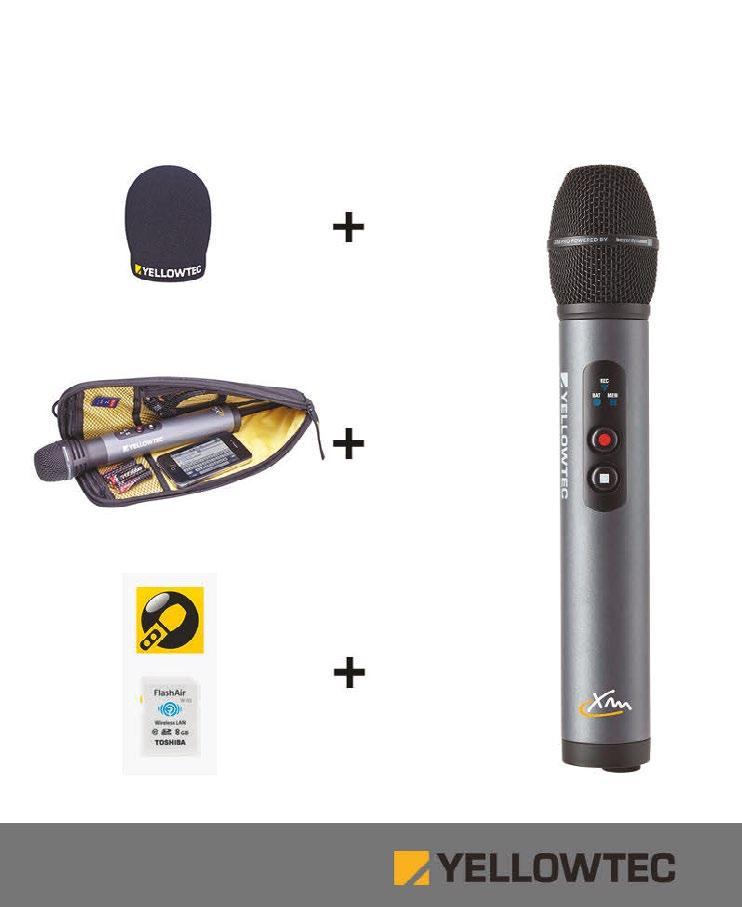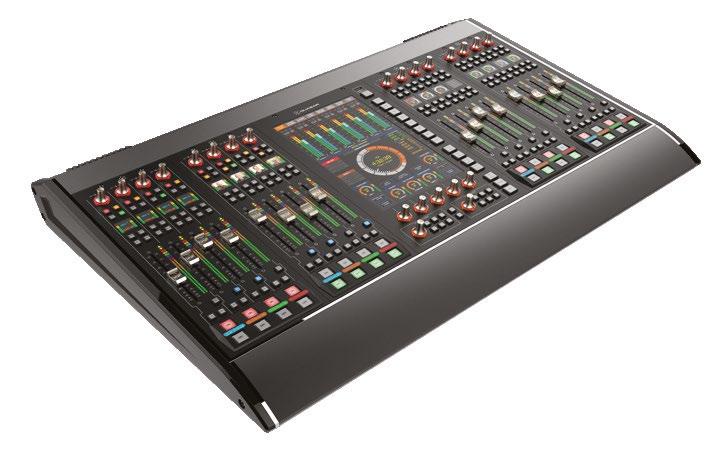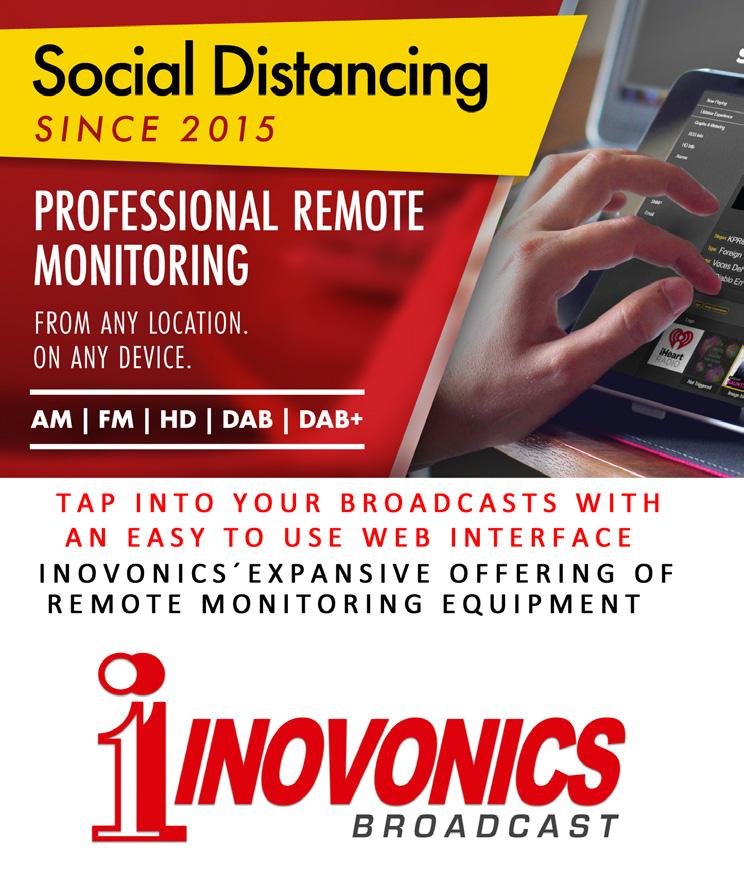
5 minute read
MPR tackles T1 to IP transition with GatesAir
Writer Bill Dahlstrom
Chief Engineer, Minnesota Public Radio
MPR tackles T1 to IP transition with GatesAir
Intraplex IP Link 200 codecs facilitate legacy equipment, future signal paths
Info
Contact Keith Adams at GatesAir at 1-513-459-3447 or visit www. gatesair.com. Legacy T1 circuits have long provided radio broadcasters with a reliable way to contribute and distribute program audio. The telecom industry’s transition to IP has introduced challenges to broadcasters with existing T1 infrastructures.
While many of these TDMbased networking and transport systems remain in service, the price of T1 circuits continues to rise while quality of service has grown uneven. Telcos have also shortened contractual renewals for these circuits, with an obvious eye toward a T1 sunset.
Minnesota Public Radio and American Public Media, with 46 public radio stations and 41 translators serving listeners in eight states, are among those that retain a highperforming T1 infrastructure for audio contribution and distribution.
We currently operate a hybrid infrastructure that includes IP codecs from a mix of vendors.
Management of our long-distance connections to the PRSS NOC is among my key responsibilities. Our APM program portfolio, which includes BBC World Service, C24 and Marketplace, reaches nearly 17 million listeners each week. To maintain that level of listenership we need to ensure our programs reach ContentDepot in Washington, and for this we have long relied on GatesAir Intraplex T1 equipment.
With T1 services fading, we are transitioning these circuits to IP with GatesAir. We now uplink a number of live streams using Intraplex IP Link 200 codecs. Full-time 24/7 streams include the BBC World Service and our own C24 Classical Music Service. BBC is delivered from London, while we originate C24 in our St. Paul studios.
The reliability of IP-type circuits is proven, but giving up the circuit diversity that T1 offers was a concern. We have found that the IP Link 200 does the job well, including the transatlantic hop from London. We have also established a bidirectional link between Washington and Los Angeles, and we intend to serve more points from St.
Paul with additional codecs. We expect to have more than 20 IP Link 200s in service before long. We’ve gained experience with codecs over the years, and the IP Link 200’s feature set is impressive. It’s ideal for our deployment strategy with its advanced functionalities, including two bidirectional feeds and additional front-panel monitoring/GUI features when needed. Most important is GatesAir’s Dynamic Stream Splicing software, which lets us send multiple identical streams over two separate paths to borrow data from each other in compensation for packet loss. We also use Intraplex LiveLook software to monitor stream performance and network conditions. Both systems, notably DSS, have been invaluable to our daily operations and stream reliability. The DSS software adds even more value when using public internet. Experience has confirmed that the IP Link 200 performs reliably and consistently over two public internet circuits with stream splicing. I expect that our first IP-based STL will be GatesAir as well. Our initial goals with the T1 to IP transition have been modest. We wanted to efficiently and reliably deliver UPGRADE to a Nautel program audio from point A to point B, and show our SOLID STATE staff the potential these units offer as we expand our contribution and distribution services. The IP Link 200 has and we’ll BUY BACK your LAST TUBE encouraged us to look beyond T1 and transition more of our contribution and distribution services to IP.
Tech Update Telos iPort High Density Offers 64 Codecs in 1RU
Telos says that its iPort High Density Multi Codec Gateway allows broadcasters to license up to 64 codecs in one rack unit.
The company says networks use iPort for both distribution and contribution spanning multiple time zones. Now, it says, the more powerful iPort High Density transports multiple channels of stereo, mono, and dual-mono audio across IP networks including private WANs, IP radio links and over good public internet connections, suitable for large-scale distribution of audio to single or multiple locations. iPort High Density comes with eight bidirectional stereo codecs, configurable to run in MPEG or Linear PCM mode. Broadcasters can license additional codecs up to 64, as well as add Enhanced aptX encoding. iPort High Density connects to existing Livewire networks using a single Ethernet cable (Cat-6 recommended) for all I/O.
Coding algorithms include AAC, AAC-LD, HE-AAC (plus v2), MP2, MP3, linear PCM and optional Enhanced aptX. MPEG offers 24 to 320 kbps while standard fixed rates for Enhanced aptX, and 24-bit PCM at 48 kHz, mono or stereo are supported. Dual, diverse-path, end-toend connections are available for reliability and redundancy. Built-in streaming servers use Shoutcast/Icecast formatting at the output. iPort High Density offers MPEG-standard ancillary data transport, up to three transparent control and metadata channels per codec and direction, and enhanced GPIO options with up to 20 end-to-end GPIO channels per codec and direction, bundled and synchronized with the respective audio content.
An optional Content Delay feature allows independent local storage and scheduled delayed playout of any or all coded audio channels.
For information, contact The Telos Alliance at 1-216-241-7225 or visit www.telosalliance.com.


Everything you need. The iXm bundle.
Get the iXm along wtih first-class accessories. For an unbeatable price.
iXm Windscreen. Keeps the noise away.




Get the ultimate protection for your iXm.




Control Your AoIP Universe

TelosAlliance.com/Quasar










